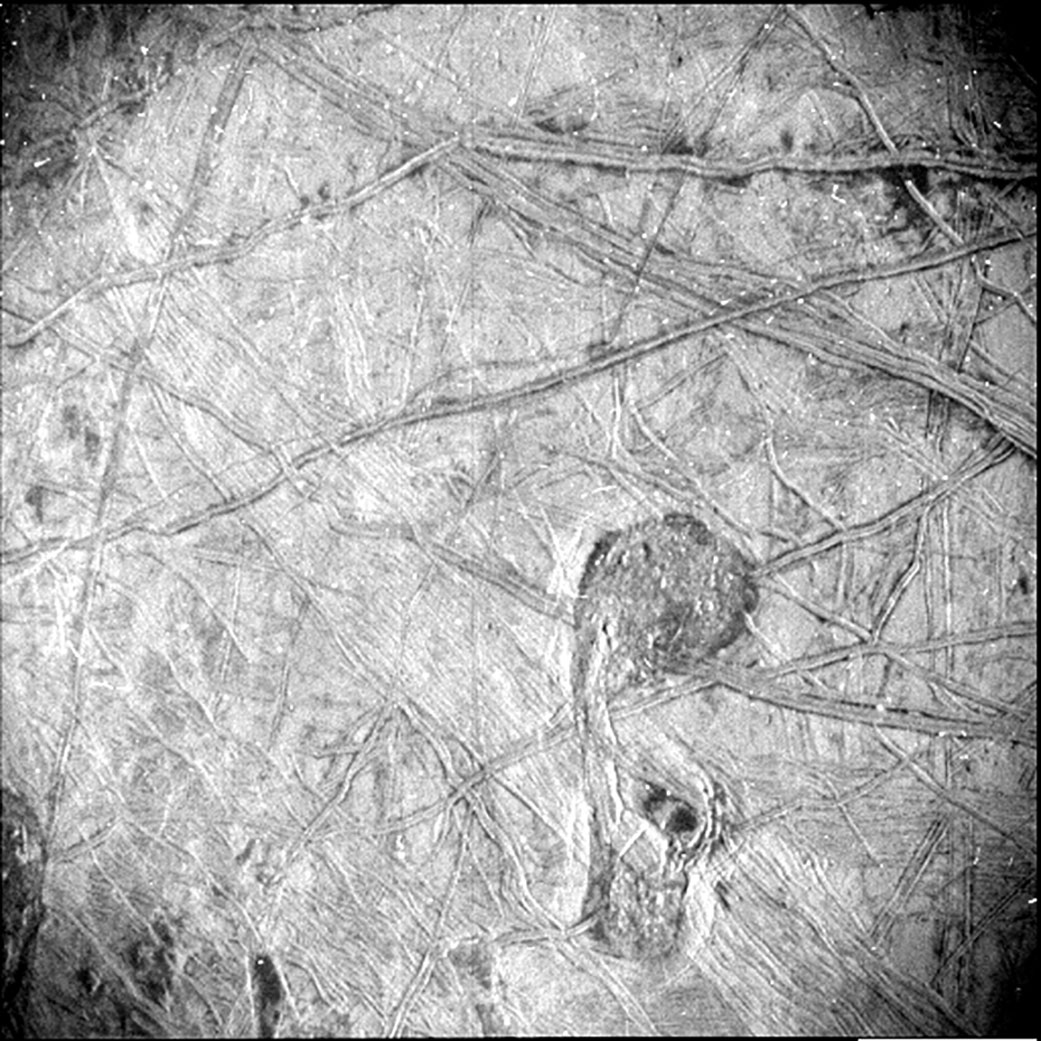NASA has published a new photo of the Europa moon. It was made by the Juno device during a close flyby on September 29. The peculiarity of the image is that the area of the surface captured on it is not illuminated by the Sun at the time of shooting.
Close visit of the Juno device
Europa is one of the most intriguing bodies of the Solar System. Under its icy surface hides a giant ocean, which in theory may be home to some forms of life. It is not surprising that scientists are eager to use every opportunity to learn more about this moon.

Such an opportunity presented itself on September 29. On that day, the Juno probe studying Jupiter made the first close flyby of Europa during its mission. However, the point of minimum approach was above the unlit hemisphere of the moon, which significantly complicated the task of obtaining detailed images of the surface. But NASA specialists found a way out by using a black-and-white SRU camera (Stellar Reference Unit). It is used as a star sensor for the correct orientation of Juno and is capable of operating in low light conditions.
Night side of Europa
Using sunlight reflected from the clouds of Jupiter as a source of illumination, SRU was able to photograph one of the sections of the surface of Europa. The shooting distance was 412 km, the resolution of the resulting image is from 256 to 340 meters per pixel.

The image published by NASA shows an area measuring 150 by 200 km. It is dotted with a network of fine grooves and double ridges. Dark spots are visible in the upper right corner of the image, as well as slightly to the right and below the center. Perhaps they were formed during the release of matter from the ocean of Europa. Below and to the right of the center is also an unusual formation, somewhat resembling a musical note. Its dimensions are 67 by 37 km. The white dots in the image were formed as a result of high-energy particles from the radiation belts of Jupiter entering the camera.
Already next year, Juno will make a close flyby of another, very remarkable moon of Jupiter — Io. This body is famous for its incessant eruptions that regularly reshape its surface.
According to https://www.nasa.gov
Follow us on Twitter to get the most interesting space news in time
https://twitter.com/ust_magazine

